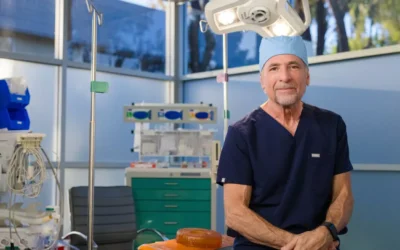A breast augmentation is the most common cosmetic surgery procedure performed in the United States. In a recent study, the American Society of Plastic Surgeons reported that more than 286,000 women received breast augmentations in 2012. When this procedure works well, it is a wonderful operation.
However, when breast implant revisions are needed, it can be a disappointment and an additional expense. Before surgery, your plastic surgeon should thoroughly educate you on these risks, the most common of which is “capsular contracture” or hardening of the implant. The national average for capsular contracture ranges between 15-25%. In my Newport Beach plastic surgery practice, we have less than a 1% rate of capsular contracture in our primary breast augmentation patients. Fifty percent of the breast surgeries that I perform entail revisional work to correct procedures done elsewhere (other surgeon’s offices), and this group also has low secondary revision rates.
When a patient presents with capsular contracture, the scar tissue that normally forms around the implant during the healing process contracts and tightens around the breast implant. It is a condition that can be very uncomfortable and painful, and it tends to significantly distort the aesthetic contours of the breast. The chance of this occurring can be minimized with optimal surgery and postoperative care, and if capsular contracture occurs, it can also be fixed with the same methods.
5 Tips to Know Before Surgery
In order to greatly reduce your risk of capsular contracture occurring, follow these 5 simple breast augmentation tips to optimize your surgical outcome:
- Choose Your Surgeon Wisely – I can’t emphasize enough the importance of choosing a Board Certified Plastic Surgeon, preferably one with a breast Fellowship and plenty of experience in all types of breast surgery. When viewing postop photos, make sure he/she has an impressive sense of sculpting aesthetics. In fact, look at the surgeon’s postop photos in other surgerical categories as well, as they should equally reflect his/her sculpting abilities. Your surgeon should thoroughly review all realistic risks and the precautions that can be taken to minimize these undesirable outcomes.
- Remember Surgical Technique is Always Key – Lower revision rates are associated with smooth surfaced implants (they can move!) being placed under the muscle through areolar edge (or lower breast fold) incisions. Avoid drains and use Keller funnels to minimize infection/contamination.
- Do Effective PostOp Implant Moving/Massage Exercises – All of my patients are instructed on how to massage their implants at the time of their first postoperative visit (see video demonstration below). They are encouraged to perform these breast massage exercises every 2 hours during waking hours for the first 2-4 weeks. Effective implant motion helps to keep the scar tissue capsule as generous as possible and thus minimizes significant contracture.
- Avoid Aspirin, Calcium, Fish Oil PreOp and Increasing BP PostOp – As a general rule, I advise my patients to stop taking all supplements three weeks before surgery and to especially avoid aspirin, as it inhibits stickiness of platelets whose clots plug up holes in blood vessels. Also, we recommend no exertion for two weeks after surgery, as it takes that amount of time for your body to consolidate those clots placed during surgery. This means that one should be calm and easygoing for two weeks (it can be done!) without getting too happy, sad or mad; straining with a bowel movement; picking up anything on the floor; etc. This regimen, mixed with meticulous surgery, should avoid any bleeding issues and the need for drains (and their propensity to possibly cause an infection). Exercise can usually be resumed about 4 weeks after surgery.
- Have a Good State of Mind – It may sound like a cliché, but how we think effects how well our body handles the stress of surgery. If you follow these breast augmentation recovery guidelines and set your mind and intentions on the best possible surgical outcome, results will be optimized.
Keep in mind that you should always be sure to consult your physician regarding postoperative care. For more information on the breast augmentation procedure and what to expect after surgery, please visit our website. To schedule an in-office or remote consultation, feel free to contact our office at 949-430-7114 or fill out our online consultation form.
Breast Augmentation Recovery: Massage Exercises Video
Watch one of our breast augmentation patients demonstrate our three recommended breast implant massage exercises in less than 50 seconds. After your procedure, perform these exercises as outlined for optimal surgical recovery and results.




